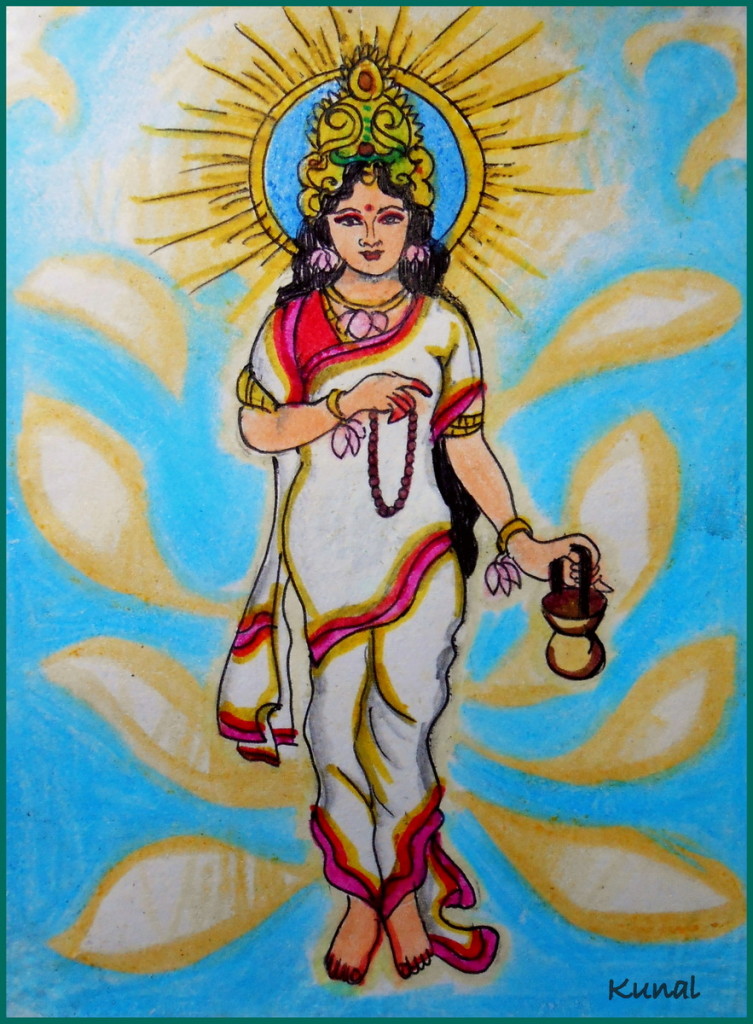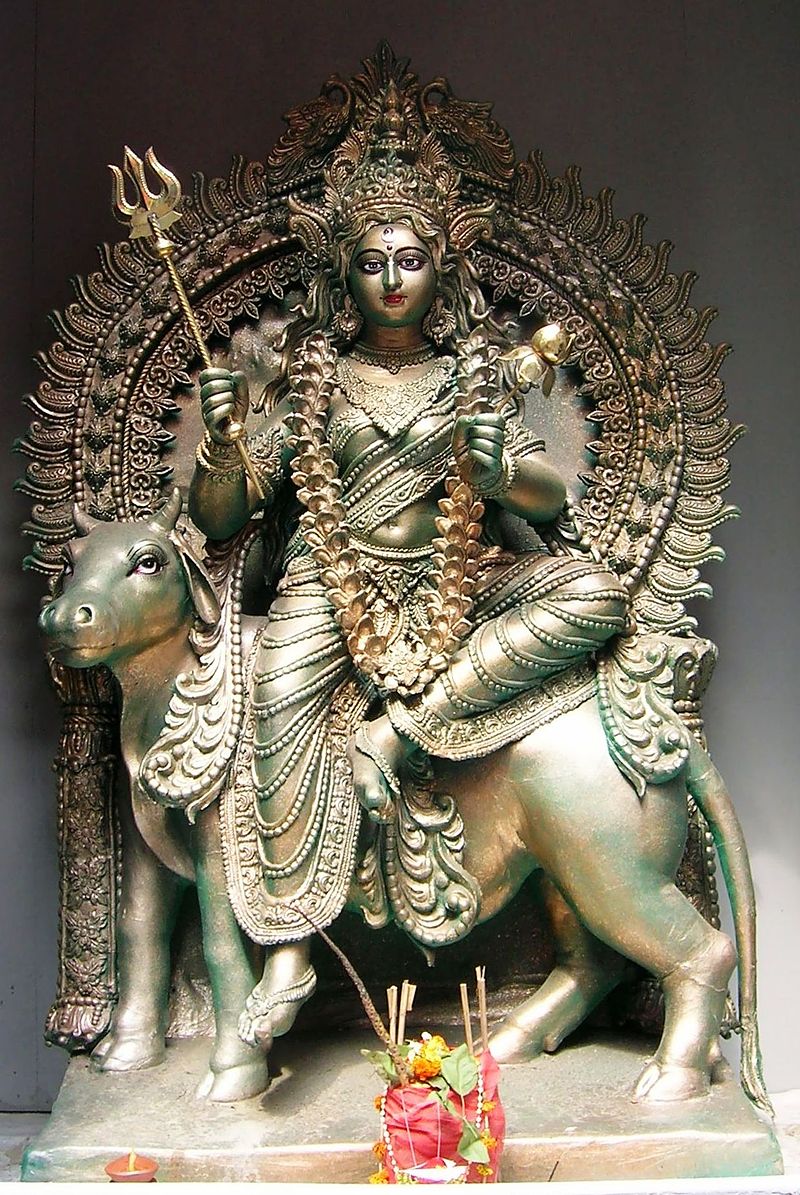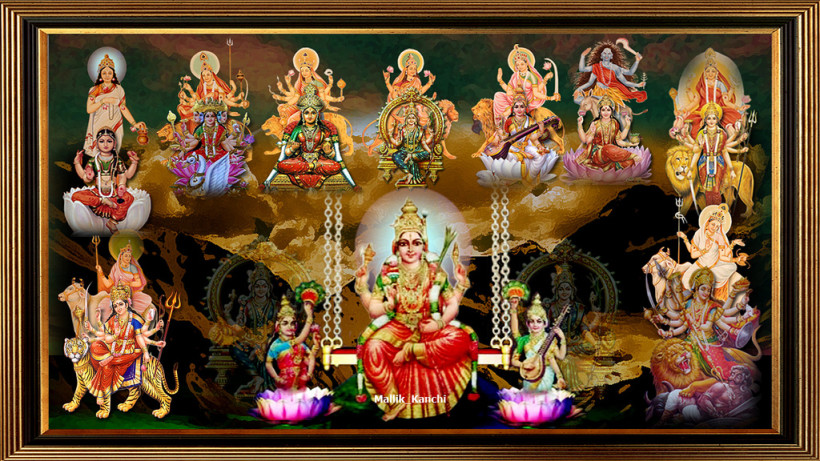
by Somya Devi | Oct 12, 2015 | Astrology, Holy Days
For the first nine days and nights of the waxing Moon this lunar cycle we celebrate Navaratri (starting October 13th in North America). Literally the “nine nights,” this is a Hindu festival dedicated to worshipping the Goddess, Devi, in her many forms, for nine days and nights. There are nine forms of Durga that are typically celebrated each day. We celebrate the power of Shakti, the sacred dynamic feminine principle of divine energy. We pray to her to help reveal and remove our shortcomings, bestow blessings, and confer wealth and knowledge. Navaratri worship can include many forms of puja (ritual prayer). These can include creating a special altar to the Goddess, and making daily offerings including flowers, food, incense, light (a flame), ghee, as well as prayer, meditation, mantras and bhajans (devotional songs). The Devi Mahatmyam (a.k.a. Chandi Path), the story of Durga, is a traditional text to read throughout this festival. Occurring in the fall-time in India and the northern hemisphere, this Navaratri also coincides with the harvest season, and is a time to give thanks for the abundance of the harvest and pray that it carries us through the winter season.
Goddess is worshipped over the nine nights in the form of nine incarnations of Durga (Navadurga). These are Shailputri, Brahmacharini, Chandraghanta, Kushmanda, Skandamata, Katyayani, Kalaratri, Mahagauri and Siddhidatri. Below are the stories of these goddesses, how to worship them, what they represent, as well as what colors and planets are associated with the nine days of Navaratri.
In many places, worship is dedicated to Goddess as Durga, Lakshmi and Sarasvati, for three nights each. Durga helps us to destroy and remove negative tendencies in our minds and hearts, cleansing them of impurities that create obstructions in our spiritual and material pursuits. Lakshmi helps us to cultivate positive qualities, like compassion and devotion. She helps us to achieve spiritual and material prosperity. Sarasvati assists us with learning and attaining knowledge and wisdom, through the illumination of consciousness. She relates to prana, the vital breath, often associated with chi or life-force. Through our devotion, service, practice, study, and meditation, we allow prana to flow freely and enter a state of peace, bliss, and oneness. The tenth day of Navaratri is known as Vijayadashami, the day of victory, and is a time for auspicious beginnings after emerging from these nine days of worship and union with the Goddess.
May your connection to the Divine Mother and Shakti within deepen and blossom during this time. Jai Ma!
First Day of Navaratri: Goddess as Shailputri
Tuesday, October 13th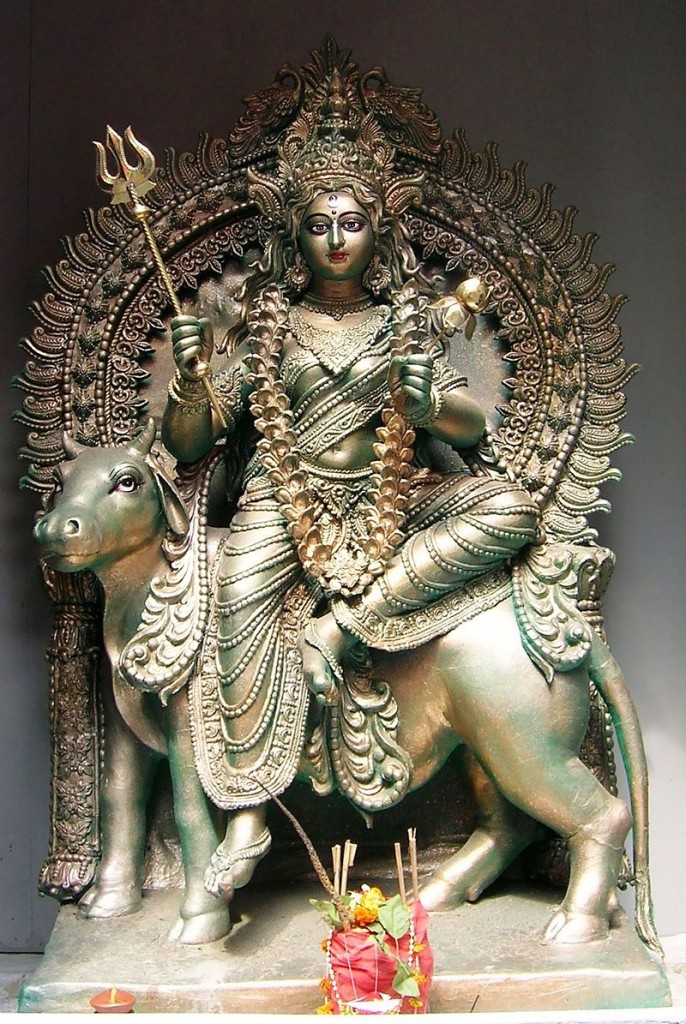
On the first day of Navaratri, On the first day of Navaratri, we honor Goddess in the form of Shailputri (a form of Durga), the “daughter of the mountains.” In the story of Shiva and Shakti, Shiva’s wife first incarnated as Sati, but Sati ended up sacrificing herself in a ceremonial fire because of her father’s (Daksha’s) disapproval of her husband. It was foretold that she would be born again to a father who respected the divine ascetic, and thus she reincarnated as Parvati, also called Hemavati (the daughter of Himavat, personification of the Himalayan mountains), or Shailputri (literally “daughter of the mountain”).
Shailputri rides a bull, Nandi, and carries a trident and a lotus in her hands. She rules the Moon (Chandra) and wears a crescent Moon on her forehead, just like her consort, Shiva. She is the mother of Kartikeya and Ganesha, and thus represents creative energy. She relates to the muladhara (root chakra), where we begin the journey of awakening the divine energy within, in the process of letting it rise into union with divine consciousness. It is good to concentrate on the root chakra today. Shailputri is a fitting goddess to worship for initiations and auspicious beginnings, and for the first day of Navaratri, as we are beginning the process of awakening Shakti. Devi’s color is red, which can be worn on all the nights of Navaratri, especially tonight.
Second Day of Navaratri: Goddess as Brahmacharini
Wednesday, October 14th
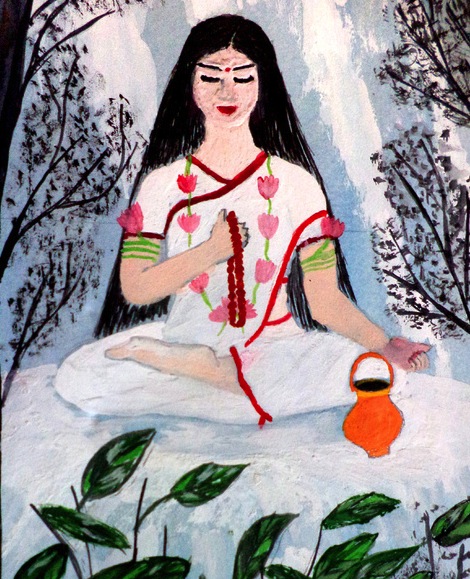 On the second day of Navaratri we worship Goddess as Brahmacharini, she who practices penance. Another form of Parvati and Durga, Brahmacharini is the form of the goddess who endured tapas or austerities (penance) to win the heart of Lord Shiva (representative of sublime consciousness). As he was an ascetic dedicated to austere meditations in solitude, the high-born Parvati forsook her father’s wealthy abode and chose the sadhu life of self-discipline and renunciation in order to attain spiritual growth. She went to live in the forest, enduring the elements, forgoing food and water, and meditating for eons. Brahmacharini is depicted in bare feet, holding a japa mala (prayer beads), and a kamandal (a simple water-pot, often carried by sadhus), and wearing rudrakshas (the bead related to Shiva and renunciation).
On the second day of Navaratri we worship Goddess as Brahmacharini, she who practices penance. Another form of Parvati and Durga, Brahmacharini is the form of the goddess who endured tapas or austerities (penance) to win the heart of Lord Shiva (representative of sublime consciousness). As he was an ascetic dedicated to austere meditations in solitude, the high-born Parvati forsook her father’s wealthy abode and chose the sadhu life of self-discipline and renunciation in order to attain spiritual growth. She went to live in the forest, enduring the elements, forgoing food and water, and meditating for eons. Brahmacharini is depicted in bare feet, holding a japa mala (prayer beads), and a kamandal (a simple water-pot, often carried by sadhus), and wearing rudrakshas (the bead related to Shiva and renunciation).
Although fasting is a suitable practice for all nine days of Navaratri (some fasts include milk or milk and fruit), it is especially potent to offer oneself to Goddess by fasting today. By worshipping Brahmacharini through simple offerings, prayer, and our own self-discipline, she blesses us with emotional and spiritual strength, and the ability to persevere through hardships. She represents and offers us loyalty, devotion, and spiritual growth and wisdom. She rules the planet Mars (Mangala), the planet of strength and courage, who assists us in overcoming weakness and practicing yogic discipline. The term brahmacharini also refers to female renunciates in the Hindu faith, who choose a life of tapas (austerity) and dedication to the Lord, rather than worldly life.
Third Day of Navaratri: Goddess as Chandraghanta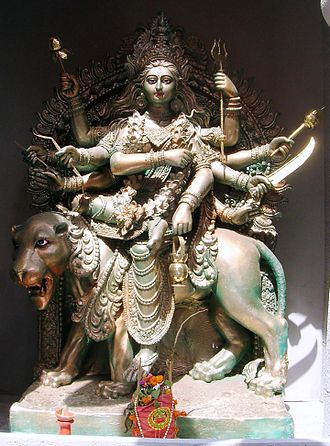
Thursday, October 15th
On the third day of Navaratri we celebrate Goddess as Chandraghanta, a powerful form of Durga. She wears a half-Moon (Chandra) in the shape of a bell (ghanta) oh her forehead. Riding a lion or a tiger, she has 10 arms in which she holds many weapons, as well as a japa mala, a lotus, a kamandal, and mudras (hand-positions) offering blessings and protection. Posed as a warrioress, she is ready to destroy the obstacles and enemies of her devotees. She rules the planet Venus (Shukra), and is truly a gentle goddess. Chandraghanta is full of love and compassion, and wants to bestow happiness and prosperity on those who worship her. This form of the Divine Mother brings us courage as well as grace and beauty. Worshipping her helps to remove suffering and to grant us serenity.
Fourth Day of Navaratri: Goddess as Kushmanda
Friday, October 16th
 On the fourth day of Navaratri we celebrate Goddess as Kushmanda, the power of Shakti that created the universe. It is said that when there was only darkness, Kushmanda smiled and the universe was illuminated. She is known as Adi Shakti, the first Shakti, creatrix of everything. She resides in the center of the Sun (Surya), and creates his bright light from her “cosmic egg.” She is radiant and glowing, and spreads warmth as well as vitality to her devotees. Kushmanda rides a lion or tiger and has 8 arms, holding many weapons, as well as a lotus, a japa mala, and a pot of honey or divine nectar.
On the fourth day of Navaratri we celebrate Goddess as Kushmanda, the power of Shakti that created the universe. It is said that when there was only darkness, Kushmanda smiled and the universe was illuminated. She is known as Adi Shakti, the first Shakti, creatrix of everything. She resides in the center of the Sun (Surya), and creates his bright light from her “cosmic egg.” She is radiant and glowing, and spreads warmth as well as vitality to her devotees. Kushmanda rides a lion or tiger and has 8 arms, holding many weapons, as well as a lotus, a japa mala, and a pot of honey or divine nectar.
Worshipping Kushmanda helps us to feel the spark of divine existence that radiates from the Sun to and through us all. She helps us to attain strength, good health, happiness and spiritual illumination. She is said to bestow siddhis (special powers) and thus can assist us in achieving success in many areas of life, including wealth, material comfort, and relationships. The power of the Sun enhances our positive and sattvic qualities through our worship of Kushmanda. She relates to the ahahata (heart chakra), and as such we should remember to approach her and make offerings from the purity of our hearts.
In some areas where Navaratri is dedicated to Durga, Lakshmi, and Sarasvati for three nights each, today begins the worship of MahaLakshmi. After calling upon the energy of Durga for three days to destroy our demons (shortcomings, false beliefs, and external obstacles), we now invoke Lakshmi, the Goddess of prosperity. She helps us to attain both material and spiritual wealth, including virtues such as devotion and compassion. Through worshipping Lakshmi and seeking her benevolence, we call forth the benevolence from within ourselves which will bring joy and happiness as we share it with others. Similarly, the warmth and energy of Kushmanda and the Sun is meant to be shared with others from the heart, which will help us to find ourselves in a kingdom of love and light.
Fifth Day of Navaratri: Goddess as Skandamata
Saturday, October 17th
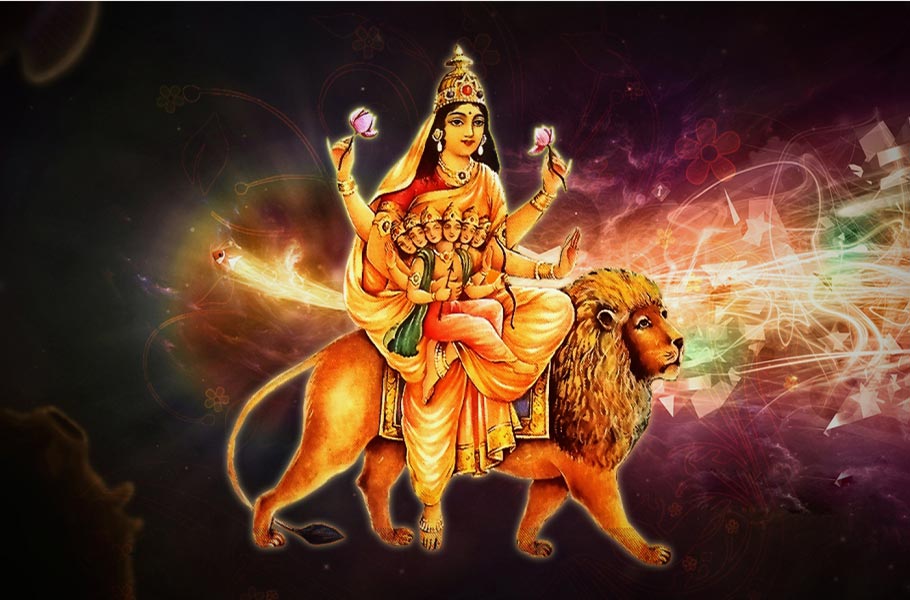 On the fifth day of Navaratri we celebrate Goddess in the form of Skandamata (literally the “mother of Skanda”). Skanda is a name for Kartikeya (also known as Murugun and Subramanya), the brother of Ganesha (both sons of Shiva and Parvati). We see Skandamata depicted holding her young six-headed son, as well as holding lotus flowers and keeping one hand in a blessing mudra. In worshiping her we call forth the protection and care that the Divine Mother has for all of creation, as all are her children. She blesses us with bliss, happiness, and motherly love, as well as nourishment and good health.
On the fifth day of Navaratri we celebrate Goddess in the form of Skandamata (literally the “mother of Skanda”). Skanda is a name for Kartikeya (also known as Murugun and Subramanya), the brother of Ganesha (both sons of Shiva and Parvati). We see Skandamata depicted holding her young six-headed son, as well as holding lotus flowers and keeping one hand in a blessing mudra. In worshiping her we call forth the protection and care that the Divine Mother has for all of creation, as all are her children. She blesses us with bliss, happiness, and motherly love, as well as nourishment and good health.
Kartikeya is the Lord of War, the leader of the army of devas (Gods) who fight the asuras (demons) in Hindu mythology. In the stories, the demon Tarakasura was tormenting all of humanity, and it was destined that only Lord Shiva’s son would be able to kill him and save the world. Shiva had renounced everything and was lost in meditation, however, after the death of his first wife, Sati. The Gods devised a plan and ensured that Parvati was born (a reincarnation of Sati), and followed a path that would result in Shiva’s emerging from meditation and remarrying. When they finally married, Shiva and Parvati ended up making love for millions of years while the world awaited their savior. Eventually, the fire deity, Agni, snuck into their cave in order to steal the seed that was needed. It was so hot that he could not hold it, however, and dropped it in the river Ganga (another manifestation of Goddess), who deposited the infant Skanda on her banks where he was found and nourished by six women (thus the six heads).
The demons represent the ignorance which gives rise to all human impurities and misfortune. In worshiping Skandamata we also worship Skanda and receive his blessings, including protection from harm and victory over our enemies, both internal and external. Skandamata relates to the vishuddhi (throat chakra), meaning “pure” or “undiluted,” showing that we can attain purity and realize infinite blessings through her worship. She is rules the planet Mercury (Budha), the planet and deity of communication and the intellect.
Sixth Day of Navaratri: Goddess as Katyayani
Sunday, October 18th
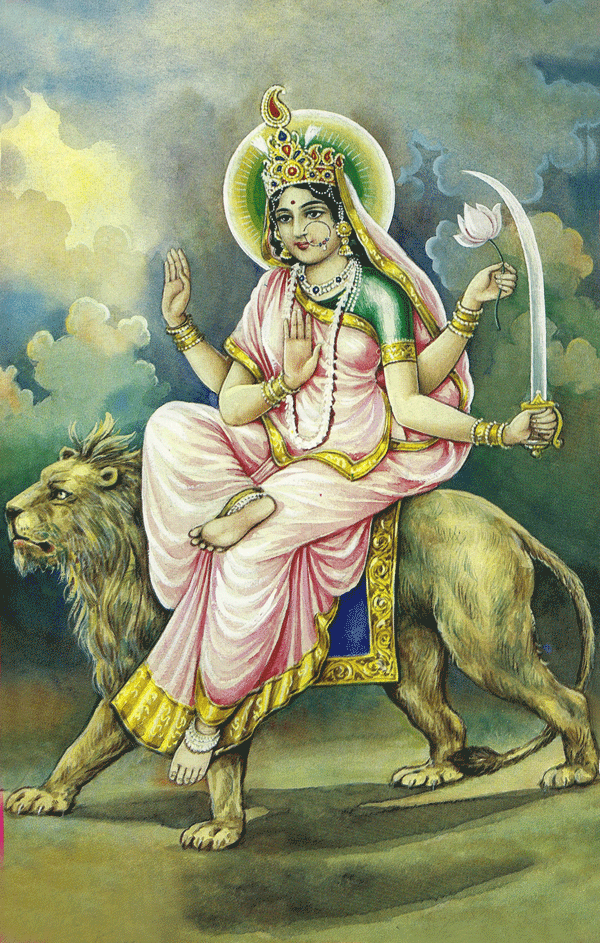 On the sixth day of Navaratri we celebrate Goddess in the form of Katyayani, the warrioress who destroyed Mahishasura (the buffalo demon). Mahishasura had been granted a boon (unbreakable wish) from Lord Brahma that determined that no man could kill him. Thus, when he was terrorizing the earth and heavens, the Gods summoned Goddess Durga to come and save them. This form of Durga is named Katyayani, for her father Katya, a devoted sage who did rigorous penance in order to have Durga take birth as his daughter. Katyayani takes a fierce form of the Divine Mother when we call upon her to destroy our demons, including both internal negativities and external obstacles to material and spiritual success. She relates to the ajna (the third-eye) chakra, where we draw our concentration during worship today.
On the sixth day of Navaratri we celebrate Goddess in the form of Katyayani, the warrioress who destroyed Mahishasura (the buffalo demon). Mahishasura had been granted a boon (unbreakable wish) from Lord Brahma that determined that no man could kill him. Thus, when he was terrorizing the earth and heavens, the Gods summoned Goddess Durga to come and save them. This form of Durga is named Katyayani, for her father Katya, a devoted sage who did rigorous penance in order to have Durga take birth as his daughter. Katyayani takes a fierce form of the Divine Mother when we call upon her to destroy our demons, including both internal negativities and external obstacles to material and spiritual success. She relates to the ajna (the third-eye) chakra, where we draw our concentration during worship today.
Katyayani relates to fervent devotion, and it is told that she was also worshipped by the Gopis of Vrindavan, who called on her to help them win Lord Krishna as their husband. It is said that worshiping Katyayani will help in bringing a good relationship and marriage, as she bestows the strength to remove obstacles. She also rules Jupiter (Guru), who represents husband in a woman’s astrological chart. Jupiter brings grace, expansion, and optimism, just as Katyayani helps us to fight sorrow and fear. Katyayani is related to fragrances, and offering her incense and other aromatics is a good practice to include in worship today. Through healing scents she helps us to fight disease and improve health. She holds both a lotus and a sword in two of her hands, and holds the other two in mudras offering protection and blessings.
Seventh Day of Navaratri: Goddess as Kalaratri
Monday, October 19th
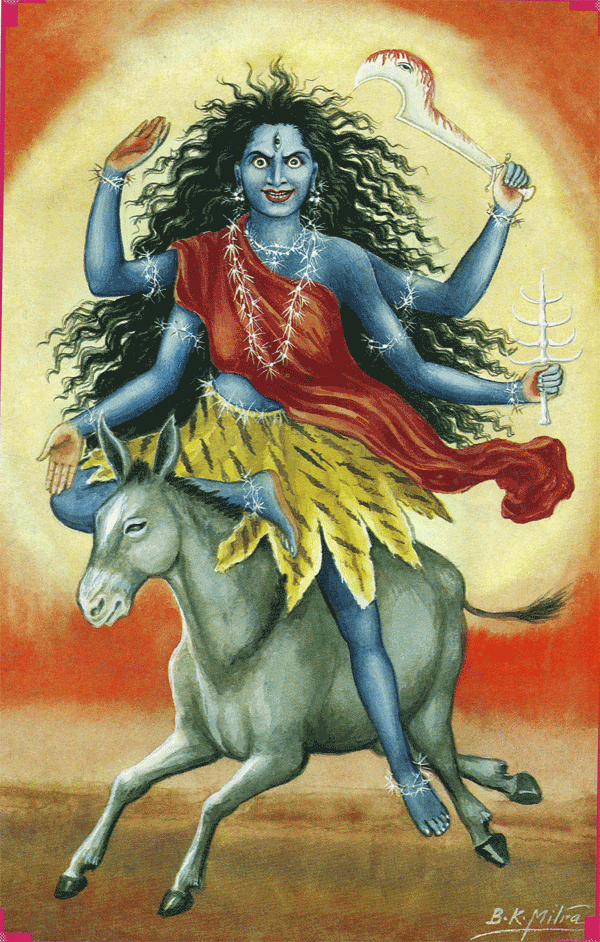 On the seventh day of Navaratri we worship Goddess as Kalaratri, a dark and fierce form of Durga. She has wild black hair, dark complexion, three red eyes, and flaming nostrils. She rides a donkey, and carries a sword and a cleaver in two hands, while her two other hands are in mudras offering blessings and protection. “Kala” refers to time, darkness, and therefore death. “Ratri” is night, and the presence of this goddess signifies a night of facing death and darkness. She reminds us that these are parts of the experience of life. By facing these aspects, and by worshipping Kalaratri, we can be freed from the pain and suffering associated with them. She is by our side bravely and compassionately as we face the morbid and terrifying aspects of existence, and helps to destroy our fears and weaknesses, giving us great strength.
On the seventh day of Navaratri we worship Goddess as Kalaratri, a dark and fierce form of Durga. She has wild black hair, dark complexion, three red eyes, and flaming nostrils. She rides a donkey, and carries a sword and a cleaver in two hands, while her two other hands are in mudras offering blessings and protection. “Kala” refers to time, darkness, and therefore death. “Ratri” is night, and the presence of this goddess signifies a night of facing death and darkness. She reminds us that these are parts of the experience of life. By facing these aspects, and by worshipping Kalaratri, we can be freed from the pain and suffering associated with them. She is by our side bravely and compassionately as we face the morbid and terrifying aspects of existence, and helps to destroy our fears and weaknesses, giving us great strength.
She is an expression of Kali, whose fearful form was birthed from Durga’s third eye when Durga needed more strength and ferocity to fight the demon Raktabija. She is also called Shubhankari, she who does auspicious deeds, and reminds us that we have nothing to fear from her, and nothing to fear, ever. The compassionate energy of the Divine Mother is always working through all parts of creation, even in the processes of destruction. Kalaratri rules Saturn (Shani), who also represents time and ultimate death, and offers us the opportunity for expanded consciousness through meditation on these inevitabilities. By worshiping Kalaratri on the seventh day of Navaratri and meditating on her deeply, we connect with the sahasrara (crown) chakra, and the barriers between mind, body, and spirit begin to dissolve. She blesses us with happiness and courage, helping to remove sadness, pain, and fear.
In some areas, the seventh day of Navaratri begins the worship of Sarasvati. Having worshipped Durga and Lakshmi for three days and nights each, to remove obscacles and obtain spiritual wealth. Now the devotee is ready to receive knowledge, which comes from Sarasvati, the goddess of learning. In other schools of worship, such as Kalikula in Nepal, Sarasvati is celebrated for the first three nights, followed by Lakshmi, and the last three nights are dedicated to Kali.
Eighth Day of Navaratri: Goddess as Mahagauri
Tuesday, October 20th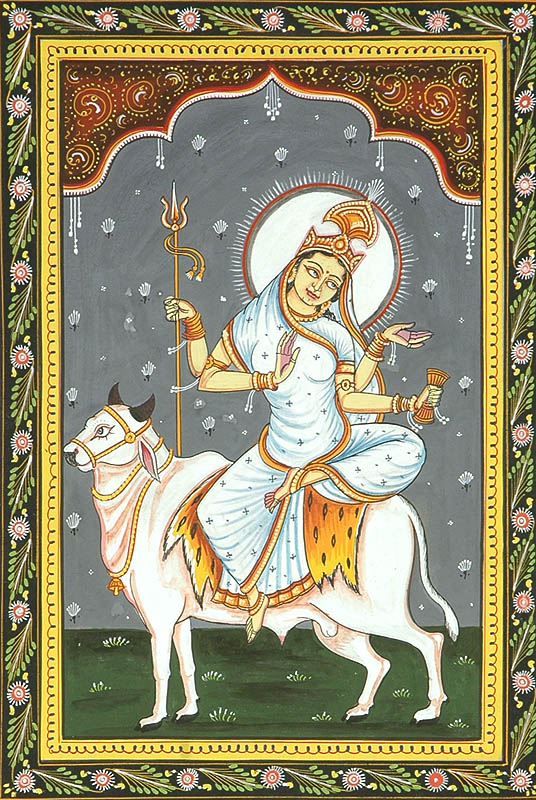
On the eighth day of Navaratri we worship Goddess as Mahagauri, the “great white goddess.” This incarnation of Durga is fair, shining and radiant like pure light, representing her purifying shakti. She rides a bull and carries a damaru (a hand-drum) and a trisul in two hands, keeping the other two in mudras for blessing and protecting. She represents compassion, truth, and purity and bestows these on her devotees. Mahagauri is often thought of as the young form of Parvati, and thus worshipers often feed young girls sweets on this day of celebration, to honor the great white goddess.
The story is often told that while Parvati was doing penance to win Lord Shiva, her body became black and dirty. When Shiva accepted her he washed her with the water of the Ganga which made her shine resplendently and become Mahagauri. This represents her power to free us from all pain and suffering and to bless us with auspiciousness and virtues, those who bathe in the waters of the holy river Ganga are said to be blessed and purified. This includes freeing us from the painful attachments to the material world. As we worship Mahagauri only after the night of worship dedicated to Kalaratri, we can see that this detachment and reemergence into the light can come only after facing death and darkness. This goddess relates to the planetary deity Rahu (the north node of the Moon), who is actually a shadow point in the cosmos and has no physical body. Thus Mahagauri relates to parts of our soul and psyche that are beyond the physical body or chakra system. By making offerings to and meditating upon her, we can begin to go beyond our attachments to the mundane details of life and purify our connection with spirit.
Ninth Day of Navaratri: Goddess as Siddhidatri
Wednesday, October 21st
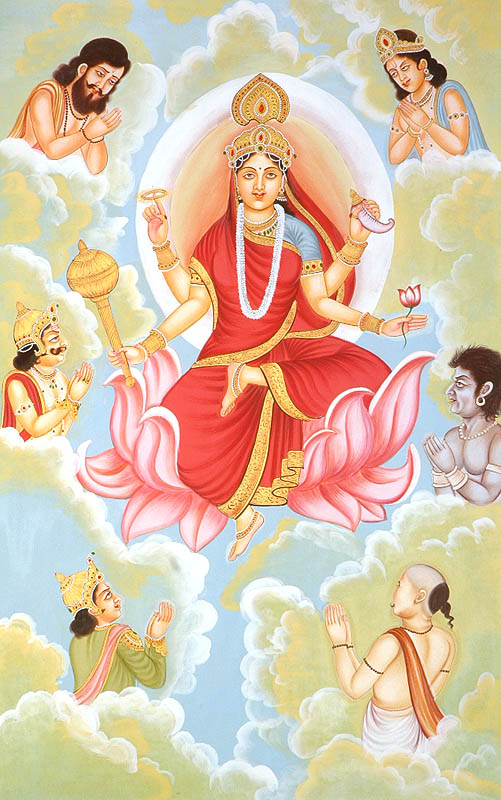 The ninth day of Navaratri is of utmost importance. On this day we worship Goddess as Siddhidatri, the giver of all siddhis, special powers or perfect attainments. Siddhis are magical, spiritual, or psychic powers, attained through dedication and devoted practice. Through worship and meditation upon all the forms of Durga, culminating with that of Siddhidatri, we can attain perfection and infinite blessings from her. Through the siddhis, all desires can be fulfilled. But it is said the greatest blessing one can receive is to transcend all desires, or to have one’s only desire be to know Goddess/God. With the blessing of devotion, through her grace, we can remain peaceful and happy in all circumstances, blissfully experiencing the Divine Mother’s presence in and throughout all of creation, in every moment.
The ninth day of Navaratri is of utmost importance. On this day we worship Goddess as Siddhidatri, the giver of all siddhis, special powers or perfect attainments. Siddhis are magical, spiritual, or psychic powers, attained through dedication and devoted practice. Through worship and meditation upon all the forms of Durga, culminating with that of Siddhidatri, we can attain perfection and infinite blessings from her. Through the siddhis, all desires can be fulfilled. But it is said the greatest blessing one can receive is to transcend all desires, or to have one’s only desire be to know Goddess/God. With the blessing of devotion, through her grace, we can remain peaceful and happy in all circumstances, blissfully experiencing the Divine Mother’s presence in and throughout all of creation, in every moment.
In her depiction, Siddhidatri sits on a lotus or a lion and holds a discus, a lotus, a mace, and conch shell, which she will use to sound the victory we attain through her worship. She is surrounded by and worshipped by all forms of divine beings–Gods, demons, spiritual masters and nature-spirits. It is said that even Lord Shiva received his powers from Siddhidatri. In the divine form that is half Shiva and half Shakti, he is merged with Siddhidatri and known as Ardhanarishvara. Siddhidatri relates to Ketu (the south node of the Moon), and thus she governs our deep and ancient psychic wisdom. She is a powerful goddess to worship for enhancing spiritual, psychic and energetic healing powers.
The Tenth Day of Navaratri: Vijayadashami
Thursday, October 22nd
The tenth day of Navaratri is known as Vijayadashami, the day of victory. After calling upon the Divine Mother’s presence and qualities to arise from within us for nine days and nights, we emerge victorious, basking in Her light and virtues. This is an auspicious time for beginning new ventures, especially creative and spiritual pursuits.
Jai Ma Durga!
I offer personal Vedic Astrology readings which can provide insight into the aspects of Shakti as well as the planetary forces you can work with in order to understand and master your personal strengths, challenges, and life course better. Click Here to order a reading and sign up for free Vedic Astrology news!
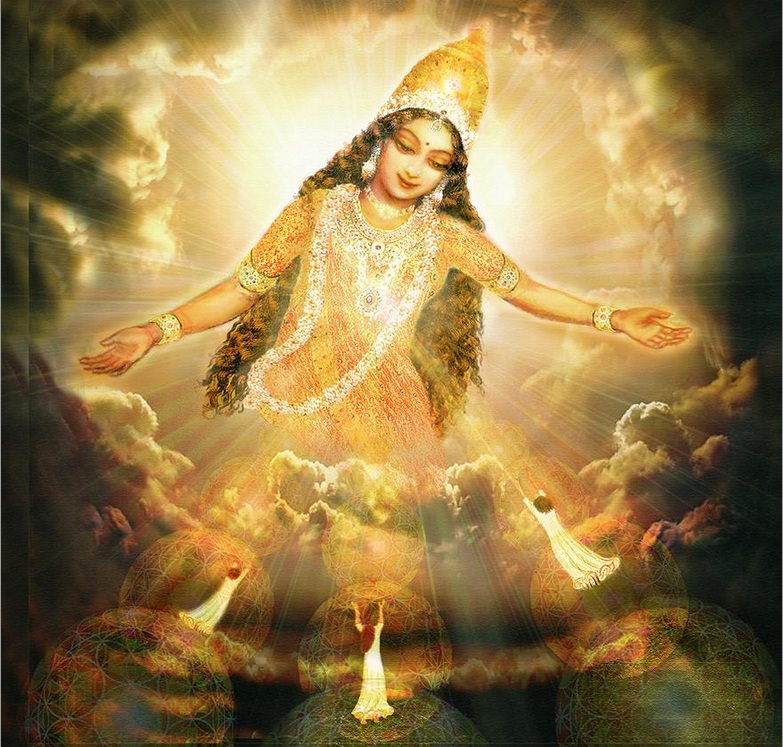
by Somya Devi | Oct 10, 2015 | Astrology, Conjunctions, Events, Holy Days
New Moon in Virgo in Chitra Nakshatra and Navaratri
As we complete the most recent lunar cycle which brought two powerful eclipses, we are settling into the effects and transformation that they brought to our lives. The solar and lunar eclipses of September were the last of a series to occur with the nodes in sidereal Virgo and Pisces, where they have sat since July 2014. Lessons that we have been working on through this time have taken on a new light, and many of us are now ready to face change and growth, whether it be in career, relationships, residence, or other important areas of life that have recently transformed.
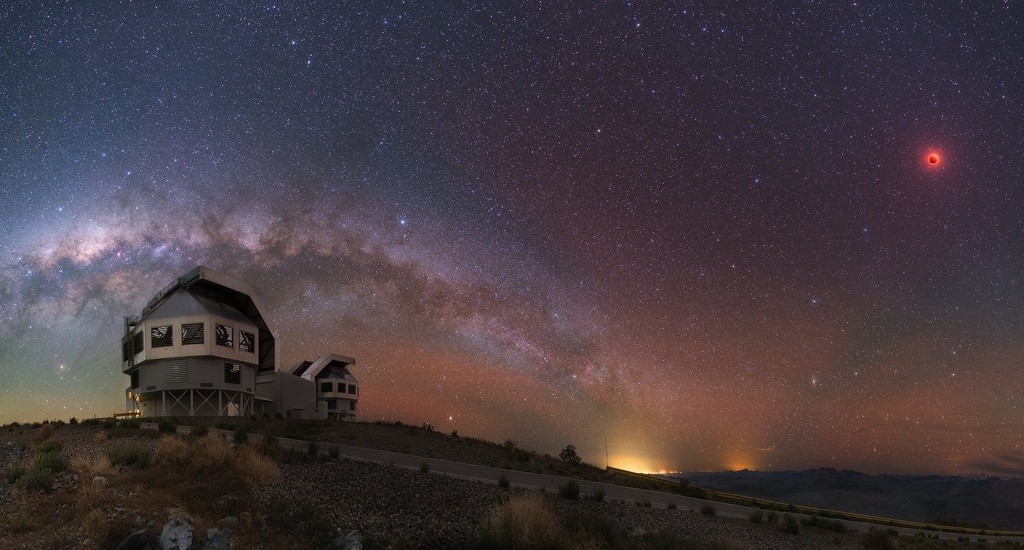 The New Moon in Virgo in Chitra nakshatra occurs on October 12th and offers us a day (and night) of stillness and darkness to sit with the changes, go inward and reflect, and prepare for the next lunar cycle. This Dark Moon phase will be from around 3pm PDT on October 11th until 5:05 pm on October 12th, at which time the Moon and Sun will be at a conjunct longitude (commonly called the New Moon). This conjunction happens near the end of Virgo constellation, in the Vedic nakshatra called Chitra. After that point the Moon begins its waxing phase, and the new lunar month.
The New Moon in Virgo in Chitra nakshatra occurs on October 12th and offers us a day (and night) of stillness and darkness to sit with the changes, go inward and reflect, and prepare for the next lunar cycle. This Dark Moon phase will be from around 3pm PDT on October 11th until 5:05 pm on October 12th, at which time the Moon and Sun will be at a conjunct longitude (commonly called the New Moon). This conjunction happens near the end of Virgo constellation, in the Vedic nakshatra called Chitra. After that point the Moon begins its waxing phase, and the new lunar month.
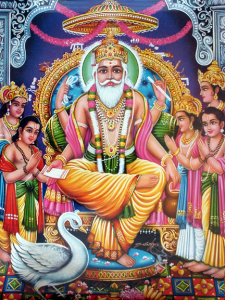 Chitra means “the brilliant” and is a very creative place in the zodiac. The deity for Chitra is Vishvakarma, the divine architect of the cosmos. This month we will feel inspired to create and to perfect our creations, just as the architect creates the universe in perfection. We will be attracted to investigate the mystery behind that divine creation. Gemstone medicine is powerful now, as gems are a symbol of this star. Chitra also relates to magic, and it is a time to tap into the powerful forces of magic within ourselves, and let them shine brightly.
Chitra means “the brilliant” and is a very creative place in the zodiac. The deity for Chitra is Vishvakarma, the divine architect of the cosmos. This month we will feel inspired to create and to perfect our creations, just as the architect creates the universe in perfection. We will be attracted to investigate the mystery behind that divine creation. Gemstone medicine is powerful now, as gems are a symbol of this star. Chitra also relates to magic, and it is a time to tap into the powerful forces of magic within ourselves, and let them shine brightly.
Beginning this cycle in Virgo, and with Sun and Moon joined with exalted Mercury there, we feel Mercury’s influence compelling us to seek understanding, and to organize the details around our creative pursuits. The second half of Chitra falls in Libra (as will the Sun during much of this lunar cycle), and under Venus’s influence, we may also feel called to balance our relationships this month. Mars is the nakshatra ruler for this star, and he brings us an energy, along with the fire element, that helps fuel along our creativity. There may be more emphasis on sexuality this cycle. Chitra is itself a balancing point in the zodiac, being the middle (14th) of the 27 nakshatras, so we seek harmony in all things as we prepare for the next season.
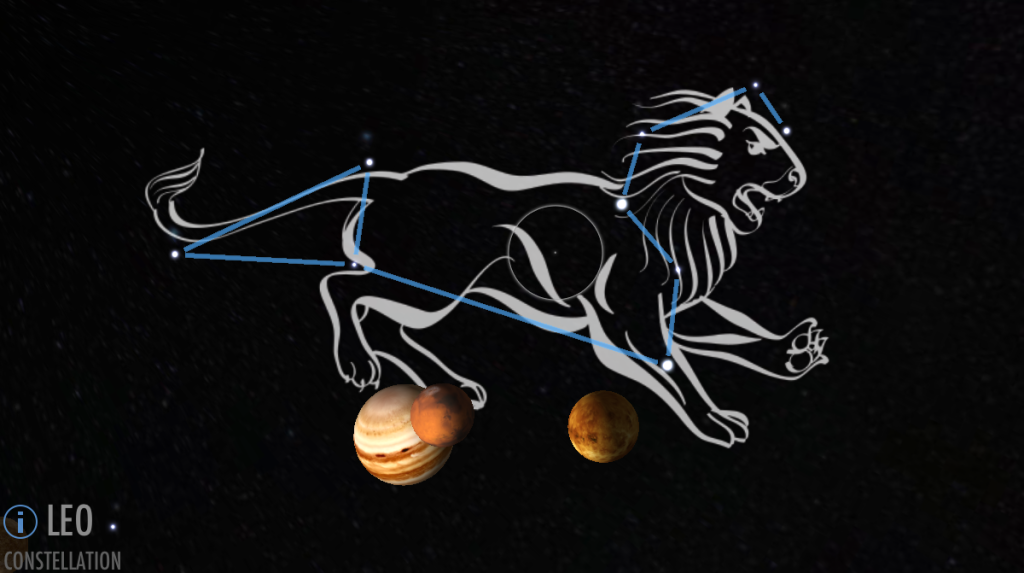 For most of this cycle (through November 2nd), we also experience the influence of Jupiter, Venus, and Mars all joined in Leo. This will make us give a lot of importance to the things all three of these planets represent (beliefs, desires, and personal will). At times this could create conflict (especially when they pass over each other in close conjunction), but in general it gives us a lot of energy. Jupiter in Leo energizes our belief systems, giving our philosophies a lot of weight in our decision-making process. Venus in Leo makes our desires come to the forefront, and we must be careful not to be too indulgent or selfish when it comes to getting what we want (whether it be in relationships or in our pursuit of beauty and recreation). Mars in Leo adds extra fire to the planet of action, will and energy, which could be good for our personal physical discipline, but could also cause us to get aggravated and argumentative over our philosophies and desires. Turn that Martian energy on yourself instead of getting hot-headed with others (read: time to reboot your workout routine or asana practice!). Sun’s rulership of Leo gives us the opportunity to work on purifying and refining all of these things this month–our beliefs, our desires, and our instinctual energy driver.
For most of this cycle (through November 2nd), we also experience the influence of Jupiter, Venus, and Mars all joined in Leo. This will make us give a lot of importance to the things all three of these planets represent (beliefs, desires, and personal will). At times this could create conflict (especially when they pass over each other in close conjunction), but in general it gives us a lot of energy. Jupiter in Leo energizes our belief systems, giving our philosophies a lot of weight in our decision-making process. Venus in Leo makes our desires come to the forefront, and we must be careful not to be too indulgent or selfish when it comes to getting what we want (whether it be in relationships or in our pursuit of beauty and recreation). Mars in Leo adds extra fire to the planet of action, will and energy, which could be good for our personal physical discipline, but could also cause us to get aggravated and argumentative over our philosophies and desires. Turn that Martian energy on yourself instead of getting hot-headed with others (read: time to reboot your workout routine or asana practice!). Sun’s rulership of Leo gives us the opportunity to work on purifying and refining all of these things this month–our beliefs, our desires, and our instinctual energy driver.
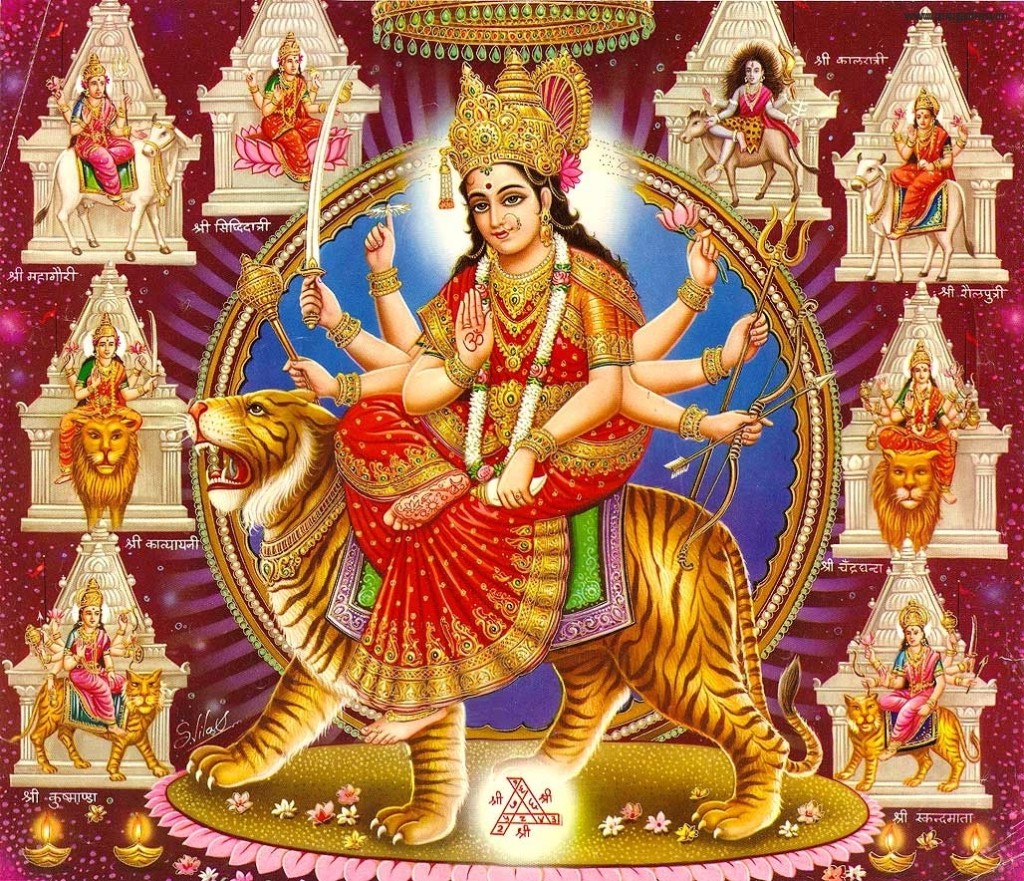 During the first nine days and nights of the waxing Moon this month, Navaratri is celebrated (starting October 13th in North America). Literally the “nine nights,” this is a Hindu festival dedicated to worshiping the Goddess, Devi, in her many forms, for nine days and nights. As the night represents darkness and ignorance, we pray to her to help reveal and remove our shortcomings, bestow blessings, and confer wealth and knowledge. We face the darkness and call on the Divine Mother to remove it and let the Atma, or the pure divinity within each of us, shine forth. Navaratri worship can include creating a special altar to the Goddess, and making daily offerings including flowers, food, incense, light (a flame), ghee, as well as prayer, fasting, meditation, mantras and bhajans (devotional songs). The Devi Mahatmya (a.k.a. Chandi Path), the story of Durga, is a traditional text to read throughout this festival. In some places Devi is worshipped over the nine nights in reverence to nine incarnations of Durga: Shailputri, Brahmacharini, Chandraghanta, Kushmanda, Skandamata, Katyayani, Kalaratri, Mahagauri and Siddhidatri. Occurring in the fall-time in India and the northern hemisphere, this Navaratri also coincides with the harvest season, and is a great time to give thanks for the abundance of the harvest and pray that it carries us through the winter season.
During the first nine days and nights of the waxing Moon this month, Navaratri is celebrated (starting October 13th in North America). Literally the “nine nights,” this is a Hindu festival dedicated to worshiping the Goddess, Devi, in her many forms, for nine days and nights. As the night represents darkness and ignorance, we pray to her to help reveal and remove our shortcomings, bestow blessings, and confer wealth and knowledge. We face the darkness and call on the Divine Mother to remove it and let the Atma, or the pure divinity within each of us, shine forth. Navaratri worship can include creating a special altar to the Goddess, and making daily offerings including flowers, food, incense, light (a flame), ghee, as well as prayer, fasting, meditation, mantras and bhajans (devotional songs). The Devi Mahatmya (a.k.a. Chandi Path), the story of Durga, is a traditional text to read throughout this festival. In some places Devi is worshipped over the nine nights in reverence to nine incarnations of Durga: Shailputri, Brahmacharini, Chandraghanta, Kushmanda, Skandamata, Katyayani, Kalaratri, Mahagauri and Siddhidatri. Occurring in the fall-time in India and the northern hemisphere, this Navaratri also coincides with the harvest season, and is a great time to give thanks for the abundance of the harvest and pray that it carries us through the winter season.
In some places, the first three nights of Navaratri are dedicated to Goddess in the form of Durga or Kali, who help us to destroy and remove negative tendencies in our minds and hearts, cleansing them of impurities that create obstructions in our spiritual and material pursuits. The next three nights are dedicated to Goddess in the form of Lakshmi, who helps us to cultivate positive qualities, like compassion and devotion. She helps us to achieve spiritual and material prosperity. In the final three nights we worship Goddess as Sarasvati, who assists us with learning and attaining knowledge and wisdom, through the illumination of consciousness. She relates to prana, the vital breath, often associated with chi or life-force. Through our devotion, service, practice, study, and meditation (all forms of yoga), we allow prana to flow freely, helping us to exist in a state of peace, bliss, and oneness. The tenth day of Navaratri is known as Vijayadashami, the day of victory. After calling upon the Divine Mother’s presence and qualities to arise from within us for nine days and nights, we emerge victorious, basking in Her light and virtues. This will be an auspicious time (October 22nd) for beginning new ventures, especially creative and spiritual pursuits.
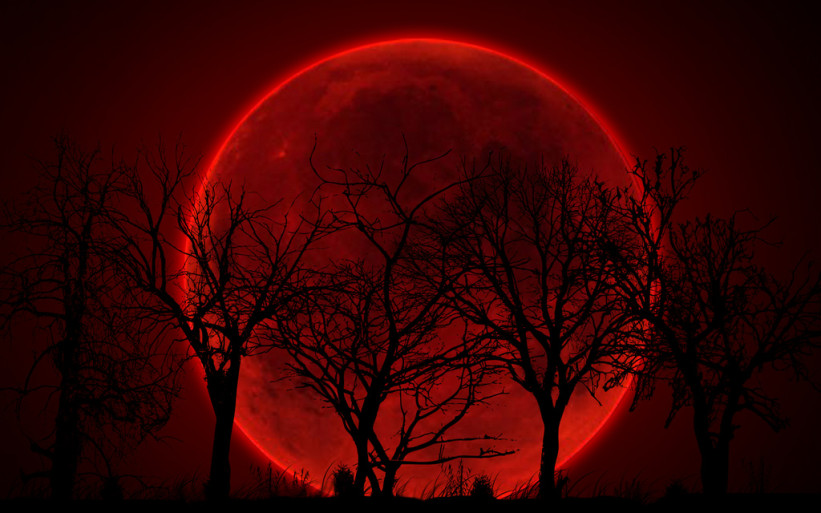
by Somya Devi | Sep 25, 2015 | Astrology, Eclipses, Events
The Full Moon and Lunar Eclipse in Uttara Bhadrapada will coincide in sidereal Pisces on the night of Sunday, September 27th, with the peak of the eclipse around 7:47 pm PDT (and the peak of the full Moon at 7:50). This is the final eclipse in a series of eclipses since Rahu and Ketu, the north and south nodes of the Moon, have been in sidereal Virgo and Pisces for the last year. During these eclipses we have been unearthing the shadows of our subconscious drives towards the moods represented by these two signs. The mood of Virgo compels us to organize the details of life and our material surroundings, to perform hard work responsibly in order to avoid conflict, and to iron out imperfections in ourselves and others. Pisces, on the opposite side of the zodiac, draws us to let go of the material world and surrender into the unknown, embracing imagination and life’s mysteries, or sometimes escaping into fantasy or other outlets to avoid the drudgery of life.

The eclipses around this astronomical axis have drawn our attention to these opposite compulsions. As the “shadow planets” align with the Sun (our inherent divine power) and the Moon (our emotional bodies), we may see what is normally subconscious but drives us to one or both of these extremes. There could arise distress around our desire to keep everything materially organized, or our tendency to be overly responsible and meticulous. This is put in glaring contrast for us when we see Pisces’ need for us to surrender to the flow and be more fluid in life’s waters. On the other hand, one’s shadow tendency to escape and avoid may arise, often in chaotic and confusing ways, to show us that we better need to integrate our dreamy idealism with practical management of life’s details. The period surrounding the eclipses can often feel turbulent, stressful, and confusing, but there are always deeper lessons being offered so that we can learn truer ways to bring forth the empowerment of our spirit and the comforting of our hearts.
This full Moon is a Supermoon–one that occurs with the Moon at it’s closest orbital point to earth (perigree). The Moon will look up to 14% larger than usual! During a lunar eclipse, the Moon takes on a dim red coloring, and is often referred to as a “blood moon” because of this. Why doesn’t the moon totally disappear behind the earth’s shadow? During solar eclipses, the Moon’s orb (directly between Earth and the Sun) appears as a black disc that almost completely covers the Sun’s light for a few minutes, save for a thin bright ring around the outside of the disc (in a total solar eclipse). The light we see as moonlight, however, is actually the light of the Sun being reflected off of the Moon. The Sun’s rays pass through the atmosphere of Earth before reaching the Moon, and are refracted in many directions. This is why the Moon does not completely disappear during the lunar eclipse — sunlight is still reaching it, but through indirect, scattered rays bouncing through the atmosphere and around the earth.
This phenomenon corresponds to the astrological idea that eclipses often cause confusion and may make us feel scattered. Furthermore, it can be hard to get in touch with the emotions of the heart (Moon energy) during a lunar eclipse, as the divine light of the Sun is reaching the emotional body only through shadowy twists and turns, not directly or with its full potency. As such, a lunar eclipse can feel especially heavy on the heart, and we may feel all twisted up inside. At the same time, we can see and feel the twisty things that are normally dormant, hidden or overlooked, but nevertheless are molecular paths making up part of our inherent experience. This is a good time to face the things that are unpleasant, or that cause us confusion or heartache, so we can let go and realign. We can look at where we have been sidestepping our way to emotional nourishment (especially through avoidance) instead of taking action by the most direct routes of self-care. Applying conscious effort and prayer, we can let go of unsupportive patterns and make way for the most authentic ways of nourishing our hearts and minds.
 The fullest part of the Total Lunar Eclipse will be from 7:11pm – 8:23 pm PDT. The beginnings and ends of the eclipse will be visible from 5:11pm to 10:22pm. Within the region of Pisces, Vedic Astrology further divides the sky, and we see that this eclipse is in the nakshatra of Uttara Bhadrapada. This star-sign lies in the area of Pegasus and Andromeda, directly above the constellation of Pisces. The deity of this nakshatra is Ahirbudhnya, the serpent from the depths, and thus this constellation relates to kundalini as well as deep emotional waters. Much wisdom is available here. As we feel into the depths of the emotions, Saturn’s rulership of this sign makes us face our fears, and strengthen our connection to divine consciousness as we loosen our attachment to the material.
The fullest part of the Total Lunar Eclipse will be from 7:11pm – 8:23 pm PDT. The beginnings and ends of the eclipse will be visible from 5:11pm to 10:22pm. Within the region of Pisces, Vedic Astrology further divides the sky, and we see that this eclipse is in the nakshatra of Uttara Bhadrapada. This star-sign lies in the area of Pegasus and Andromeda, directly above the constellation of Pisces. The deity of this nakshatra is Ahirbudhnya, the serpent from the depths, and thus this constellation relates to kundalini as well as deep emotional waters. Much wisdom is available here. As we feel into the depths of the emotions, Saturn’s rulership of this sign makes us face our fears, and strengthen our connection to divine consciousness as we loosen our attachment to the material.
 Uttara Bhadrapada also relates to the funeral cot and the process of death and dying. With the Moon eclipsed here, we may feel like we are dying, or may desire to retreat and escape from the world temporarily. We may need to allow the death of something whose time has come, our attachment to which has been holding us back from living in our highest alignment with spirit. Also a Harvest Moon (the full Moon closest to the fall equinox, accompanied by many nights of bright moonlight in the evening), it is time to cut down and allow the death of what we have been cultivating, and permit it to transform into its next purpose. This may involve letting go of some of our desire to organize the material world (the mood of Virgo, where the Sun lies). The approach of this eclipse has likely brought up a lot of conflict and confusion around this issue, and the Solar eclipse on September 12th likely disturbed the other end of the spectrum (material stability). We may also be called to find more balance in our Virgoan pursuits, and be more meticulous with our own spiritual practices rather than with everything and everyone in the world around us.
Uttara Bhadrapada also relates to the funeral cot and the process of death and dying. With the Moon eclipsed here, we may feel like we are dying, or may desire to retreat and escape from the world temporarily. We may need to allow the death of something whose time has come, our attachment to which has been holding us back from living in our highest alignment with spirit. Also a Harvest Moon (the full Moon closest to the fall equinox, accompanied by many nights of bright moonlight in the evening), it is time to cut down and allow the death of what we have been cultivating, and permit it to transform into its next purpose. This may involve letting go of some of our desire to organize the material world (the mood of Virgo, where the Sun lies). The approach of this eclipse has likely brought up a lot of conflict and confusion around this issue, and the Solar eclipse on September 12th likely disturbed the other end of the spectrum (material stability). We may also be called to find more balance in our Virgoan pursuits, and be more meticulous with our own spiritual practices rather than with everything and everyone in the world around us.
 The shakti of Uttara Bhadrapada is the power to bring rain. Call upon the cleansing energy of rain to help wash away the old and stale and nourish the soil of decay to make it fertile for new life. Pisces is the last sign of the zodiac and brings us closer to death, helping us to see that the material clinging we experience through life is not what is eternal. As we release our holding and consciously embrace the unknown–rather than simply falling into the escapist potential of Pisces energy–we come in contact with the abundance of divinity that lies within the great mystery. We can awaken the serpent power of Ahirbudhnya and invite new wisdom to circulate through our free-flowing channels. The Full Moon and Lunar Eclipse in Uttara Bhadrapada on September 27th offer us the chance to see into our own depths and expand our capacity for conscious surrender as we continue into the next chapter.
The shakti of Uttara Bhadrapada is the power to bring rain. Call upon the cleansing energy of rain to help wash away the old and stale and nourish the soil of decay to make it fertile for new life. Pisces is the last sign of the zodiac and brings us closer to death, helping us to see that the material clinging we experience through life is not what is eternal. As we release our holding and consciously embrace the unknown–rather than simply falling into the escapist potential of Pisces energy–we come in contact with the abundance of divinity that lies within the great mystery. We can awaken the serpent power of Ahirbudhnya and invite new wisdom to circulate through our free-flowing channels. The Full Moon and Lunar Eclipse in Uttara Bhadrapada on September 27th offer us the chance to see into our own depths and expand our capacity for conscious surrender as we continue into the next chapter.
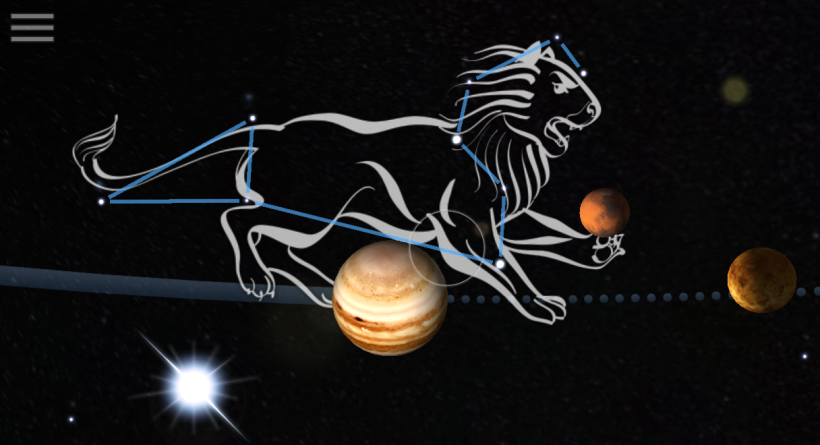
by Somya Devi | Sep 9, 2015 | Astrology, Conjunctions, Events, Planets Changing Signs, Retrograde
The New Moon and Solar Eclipse in Purva Phalguni on September 12th will bring the shadow energy of the planet Rahu to the forefront, revealing to us things that are usually hidden in the subconscious. The New Moon occurs in sidereal Leo, around 11:41pm PDT. This begins a Leo cycle for us, which raises the energy of inspiration and compels us to tap into our source power and share it with others. Leo is ruled by the Sun, the archetype of divine masculine energy in the heavens. The source of all life on earth, Sun energy reminds us of the divine spark that we all share, and encourages us to purify ourselves and to care for our surroundings (or kingdom), offering our power forward. During this month we may feel an urge to purify ourselves and purge what is unneeded–maybe a cleanse to prepare for the changing of seasons. Take stock of where you allocated your energy this summer, what type of kingdom you’ve created, and what you can do to strengthen your connection with source as you continue to manage your responsibilities.
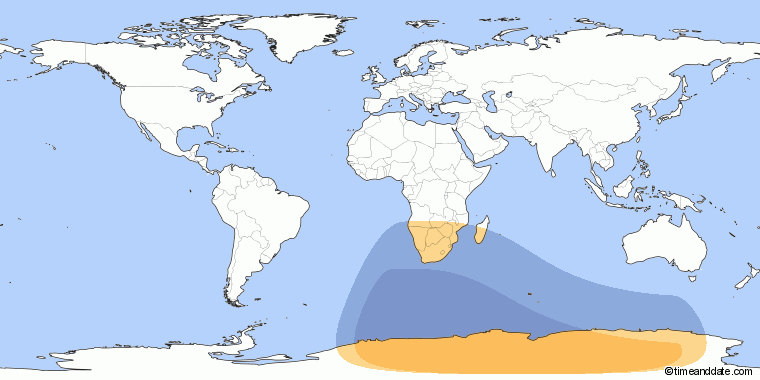 On the night of September 12th (Pacific time), Sun, Moon, and Earth are all in close alignment near the northern lunar node, known as Rahu. Earth will experience a partial solar eclipse at this time, but it will only be visible from very southern regions (southern Africa and Antarctica). When the Moon’s orb passes in front of the Sun, and the shadow emerges, this brings otherwise hidden energies and knowledge to the surface. In the sign of Leo, this eclipse will help us to examine our relationship with power, how we approach our responsibilities, and where we feel powerless. At the eclipse time, the Sun’s light (representative of our inherent power and connection to the soul) is temporarily blocked out. This can elevate our awareness of where we feel powerless, and at the same time directs us to find that connection with source and soul power. It ultimately leads us to the realization that God/Goddess energy is in fact present with us in all our movements and actions.
On the night of September 12th (Pacific time), Sun, Moon, and Earth are all in close alignment near the northern lunar node, known as Rahu. Earth will experience a partial solar eclipse at this time, but it will only be visible from very southern regions (southern Africa and Antarctica). When the Moon’s orb passes in front of the Sun, and the shadow emerges, this brings otherwise hidden energies and knowledge to the surface. In the sign of Leo, this eclipse will help us to examine our relationship with power, how we approach our responsibilities, and where we feel powerless. At the eclipse time, the Sun’s light (representative of our inherent power and connection to the soul) is temporarily blocked out. This can elevate our awareness of where we feel powerless, and at the same time directs us to find that connection with source and soul power. It ultimately leads us to the realization that God/Goddess energy is in fact present with us in all our movements and actions.
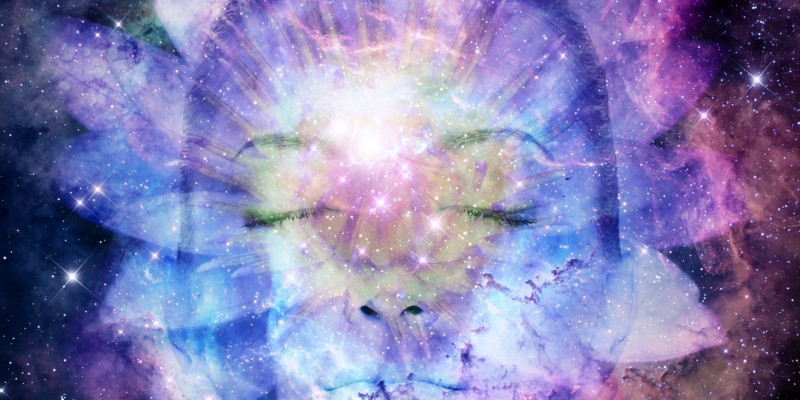 Looking deeper into the sign of Leo, we see that the New Moon and Solar Eclipse occur in the Vedic nakshatra (constellation) called Purva Phalguni. The symbols of this star sign are a couch, a hammock, or the two back legs of a bed. As such, this sign represents rest and relaxation, as well as recreation. Its energy will encourage us to take it easy and have some fun. This sign is also associated with a Shiva lingam, and is sometimes translated as “the former reddish one.” In this way Purva Phalguni is related to procreation.
Looking deeper into the sign of Leo, we see that the New Moon and Solar Eclipse occur in the Vedic nakshatra (constellation) called Purva Phalguni. The symbols of this star sign are a couch, a hammock, or the two back legs of a bed. As such, this sign represents rest and relaxation, as well as recreation. Its energy will encourage us to take it easy and have some fun. This sign is also associated with a Shiva lingam, and is sometimes translated as “the former reddish one.” In this way Purva Phalguni is related to procreation.
It is a good time to remember that in order to be creative, we must also spend time being inactive and restful. The period of rest is what assists us in rejuvenating our creative energies in order to have the strength to be active and producing output again. In the generally active sign of Leo (a fire sign, ruled by the Sun), this nakshatra reminds us that part of tapping into our inherent strength and divinity is sitting back and enjoying life. The deity for this nakshatra is Bhaga, who relates to enjoyment, wealth and prosperity (he also relates to the Sun). Venus is the ruling planet of this star, which naturally draws an emphasis towards pleasurable activities, art and beauty, as well as makes it a social constellation. This could be a great weekend to enjoy some art and music, as well as relaxation and romance. Bhaga also relates to the morning star, which is currently Venus, who rises in the east a little while before the Sun.

Venus, who was in retrograde (backwards) motion for the last 6 weeks or so, is now stationary, and will soon be starting to move forward slowly through the zodiac. During this time we may have felt backed up around relationships, or around how we relate with pleasure and seeking happiness. By this time we should have had some realizations and some clarity about which direction to move forward and how. The New Moon and Solar Eclipse in Purva Phalguni on September 12th give us a boost of energy towards letting loose around Venus things–slowing down, relaxing, and letting our pleasure centers indulge a little. Purva Phalguni reminds us about the importance of recreation.
Of course, there is also a shadow side to each sign that can send us too far in one direction. When amplified by the eclipse, Purva Phalguni energy could lead us to slip out of balance into a place of excessive indulgence or laziness. Especially with the procreative power of this nakshatra, make sure that your romantic affairs don’t go further than you’re ready for! Jupiter is very close to the Sun during this eclipse as well, which can amplify things and bring on a big optimistic nature. Feeling hot under the Sun’s rays, however, Jupiter’s position here could make us doubt our current belief systems and want to purify them as well. This gives us an opportunity to freshen our value systems and decide what teachings to hold onto, sorting out what serves our highest purpose and what does not.
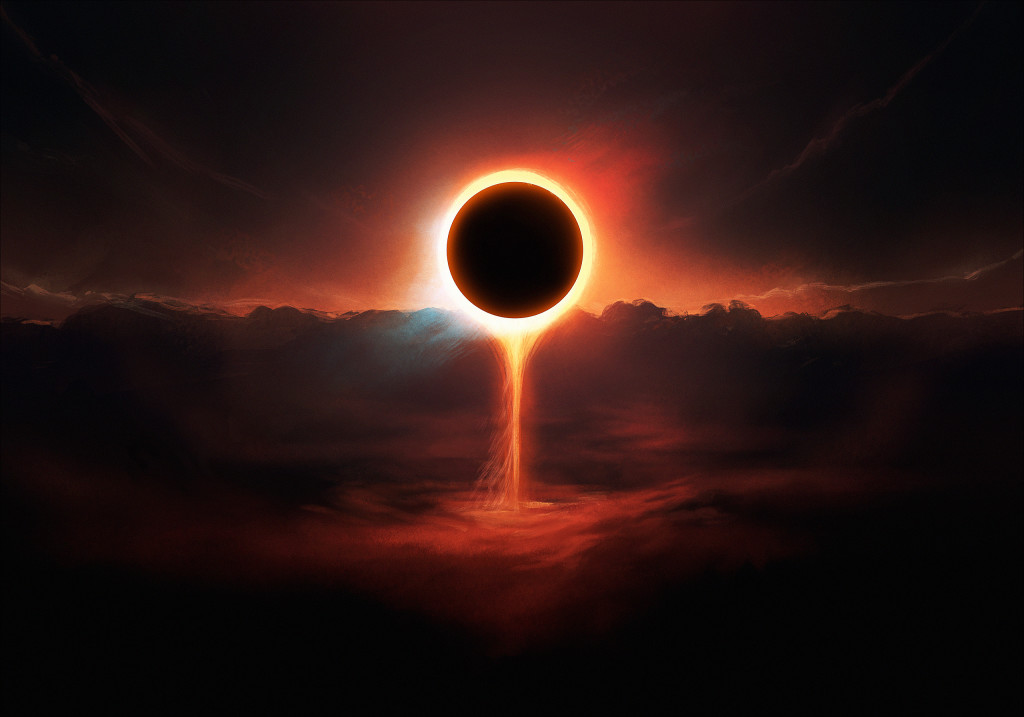 Eclipses in general tend to amplify everything, and though it can feel like a lot of upheaval is going on, the result is usually a revelation of wisdom. We may get to realize where we have been denying ourselves the inherent goodness found in resting, relaxing, and having fun. We could get a good look at the shadow side of our pursuits of indulgence (or over-indulgence). The nodes themselves are still on the Virgo/Pisces axis (through all of the eclipses this year), so we’ve been called to look at and balance in ourselves the side of us that wants to keep everything organized (Virgo) versus the side of us that is willing to let go into the unknown (Pisces). Examine what these themes mean to you, and where you’ve been struggling with that dichotomy. We’ll see another eclipse (Lunar, this time) in two weeks on the September 27th full Moon, so it’s likely that we’ll be really feeling what is coming up around this through then. Wherever Pisces and Virgo are in your chart (based on Vedic rising sign), the motifs of those houses are what will be calling your attention through this time.
Eclipses in general tend to amplify everything, and though it can feel like a lot of upheaval is going on, the result is usually a revelation of wisdom. We may get to realize where we have been denying ourselves the inherent goodness found in resting, relaxing, and having fun. We could get a good look at the shadow side of our pursuits of indulgence (or over-indulgence). The nodes themselves are still on the Virgo/Pisces axis (through all of the eclipses this year), so we’ve been called to look at and balance in ourselves the side of us that wants to keep everything organized (Virgo) versus the side of us that is willing to let go into the unknown (Pisces). Examine what these themes mean to you, and where you’ve been struggling with that dichotomy. We’ll see another eclipse (Lunar, this time) in two weeks on the September 27th full Moon, so it’s likely that we’ll be really feeling what is coming up around this through then. Wherever Pisces and Virgo are in your chart (based on Vedic rising sign), the motifs of those houses are what will be calling your attention through this time.
 So, during this New Moon, take some time to relax and enjoy your surroundings, reveling in the kingdom that you’ve built for yourself to live in (whatever that looks like). Take pleasure in the work that you’ve done, and let that happiness rejuvenate your creative energies before the next steps must be taken. Saturn also aspects this New Moon and eclipse, so that will assist the purification process by helping us to commit to the responsibilities and values we find most beneficial towards our goals and soul purpose. It could still be hard work, especially as we proceed with relationships after reevaluating them through Venus retrograde. The balance between letting go and organizing everything will still be on our minds through the next eclipse, and we’ll get some time to review it when Mercury goes retrograde on the 17th. For now, with Sun and Moon in Leo, bask in the last rays of summer offered by that warm, generous headspring that fuels us all, remembering the atman that it also symbolizes.
So, during this New Moon, take some time to relax and enjoy your surroundings, reveling in the kingdom that you’ve built for yourself to live in (whatever that looks like). Take pleasure in the work that you’ve done, and let that happiness rejuvenate your creative energies before the next steps must be taken. Saturn also aspects this New Moon and eclipse, so that will assist the purification process by helping us to commit to the responsibilities and values we find most beneficial towards our goals and soul purpose. It could still be hard work, especially as we proceed with relationships after reevaluating them through Venus retrograde. The balance between letting go and organizing everything will still be on our minds through the next eclipse, and we’ll get some time to review it when Mercury goes retrograde on the 17th. For now, with Sun and Moon in Leo, bask in the last rays of summer offered by that warm, generous headspring that fuels us all, remembering the atman that it also symbolizes.


